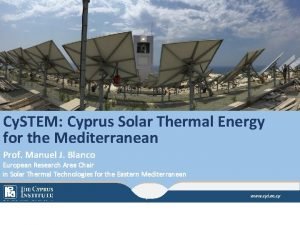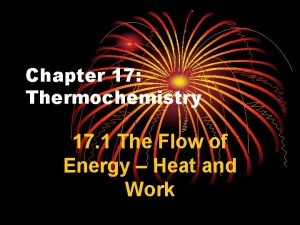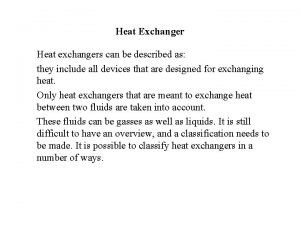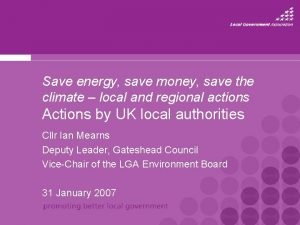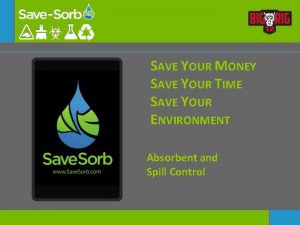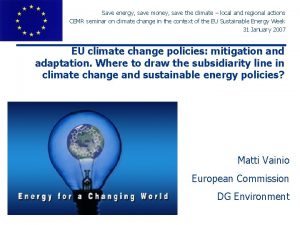Trans Heat The New Technology To Save Primary

















- Slides: 17

© Trans. Heat The New Technology To Save Primary Energy And To Reduce CO 2 Emission

Input > Output Primary Energy n n Input 100 % Output only 30 to 50 % Waste heat is a result of almost every production process Many times waste heat needs to be cooled down by usage of additional primary energy

Waste Heat n n Mostly waste heat appears at times and places where it can‘t be used Waste heat can´t be stored efficiently and over long periods with common technologies

Usage of Waste Heat n n Waste heat is mostly used for heating and cooling applications on site or very near by The common application is usage for district heating systems

District Heating n n Very high investments in pipelines Very high investments for maintenance High losses of energy due to long distances Immobile system

Latent Heat Storage n n During phase transformation, from solid to liquid, salts are storing huge amounts of enthalpy energy Loading Temperature 58° Celsius Heat Unloading up to 180° Celsius Max Thermal Power 0, 5 MW

© Trans. Heat n This new technology combines the advantages of district heating systems with those of latent heat storage systems not having the commonly known disadvantages

© Trans. Heat Waste heat n can be collected at power and production plants n can be stored in mobile latent heat storage containers n can be shipped to any place, where it can be economically used

Functional Principle

© Trans. Heat n n Trans. Heat© is connected in parallel to the building heating system By using a light industrial oil and a heat exchanger, the heat from the container is transferred to the medium used to circulate heat in the building (normally water)

Cooling 1 n n The local type of cooling system uses standard heat absorption technology It is installed directly in the customers building This system uses magnesium chloride with a melting point of 240, 8 ° F Almost no electrical energy is necessary

Cooling 2 n n n A centralized new type of absorption technique chills sodium acetate to a temperature of 32/21 °F, Connects directly to the AC system 53. 6°F from the AC is replaced with 42. 8 °F from Trans. Heat©

An Application n Headquarters of Clariant Germany Approx. 160, 000 sqf Annually 4, 500 MWh consumption of primary energy for heating and cooling 3, 5 MWh Container

CO 2 Savings Saving of all primary energy consumption n Heat 103, 000 gal. oil (3. 900 MWh/a) Electricity 900 MWh/a for AC Cooling at plant 4, 500 MWh el. 1, 143 t CO 2 (10, 06 kg/gal ) 773 t CO 2 (739 g/k. Wh) 3, 665 t CO 2 (739 g/k. Wh) n Total CO 2 pollution: 5, 581 t CO 2 /a n Minus CO 2 pollution Trans. Heat transportation 24 t CO 2 /a n n n CO 2– savings : app. 5, 550 t/a net savings

© Trans. Heat n n n Will not revolutionize the energy market Will not replace common systems Can not be the absolute solution for environment problems

Trans. Heat© n n Is one possibility to help saving primary energy Is one possibility to reduce air pollution Is one step in the right direction Is a system to be used in JI or CDM

® Trans. Heat Eureca AG Berliner Ring 163 64625 Bensheim Germany Telefon: 0049 6251 -581696 Fax: 0049 6251 -581699 Web: www. eureca-ag. de E-mail: info@eureca-ag. de
 Komanda save dhe save as
Komanda save dhe save as Difference between save and save as
Difference between save and save as Caller save vs callee save
Caller save vs callee save Bart has decided to buy some water balloons
Bart has decided to buy some water balloons Heat capacity vs specific heat
Heat capacity vs specific heat Formula specific latent heat
Formula specific latent heat Dry heat method
Dry heat method Petro-tech heat technology inc
Petro-tech heat technology inc Heat technology cyprus
Heat technology cyprus Quiz 2: heat flow and technology
Quiz 2: heat flow and technology Rotary heat exchanger
Rotary heat exchanger Chapter 15 cooking techniques
Chapter 15 cooking techniques Hình ảnh bộ gõ cơ thể búng tay
Hình ảnh bộ gõ cơ thể búng tay Slidetodoc
Slidetodoc Bổ thể
Bổ thể Tỉ lệ cơ thể trẻ em
Tỉ lệ cơ thể trẻ em Chó sói
Chó sói Tư thế worm breton
Tư thế worm breton








